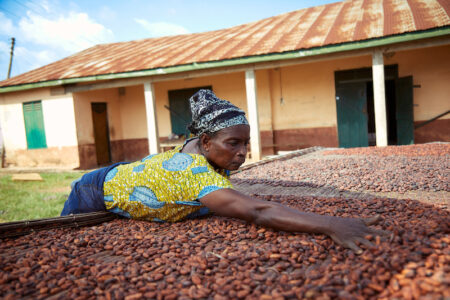Gudrun Belgian chocolate group releases sustainable cacao bites series

Gudrun is among companies developing innovative cacao-based products. Pic: Gudrun
The Gudrun Belgian chocolate group has unveiled a key new sustainably-focused ‘upcycled’ confectionery series of cacaofruit bites that re-use the fruit’s pulp, delivering a saving of around 30% on what would previously have been wasted material, writes Neill Barston.
As the Antwerp-based company noted, its chocolatiers have placed considerable emphasis into delivering innovative flavours for its latest series, which comes amid similar ventures from major firms such as Barry Callebaut and Nestle, which have turned their turned their attention to such products that are environmentally sound, and offer farmers additional revenue generating potential.
For its part, Gudrun has been at the heart of the Belgian chocolate and truffle scene since 1942, starting out as a pastry shop in Lier is today a premium private label producer making 4,000 tons of chocolate every year. One thing has not changed over time: all chocolate still originate from a local kitchen.
Furthermore, the company underlined its sustainability credentials marking its 80th anniversary through signing the Beyond Chocolate charter. This initiative brings together chocolate professionals in Belgium and promotes sustainable chocolate. Meanwhile, Gudrun has developed a roadmap through which it intends to work toward the United Nations Sustainable Development Goals (SDGs). Cacaofruit Bites, the company’s latest innovation, provides the icing on the (chocolate) cake.
According to the company, it has a long-established policy of reducing waste streams. With the brand new Cacaofruit Bites, the company is going one step further. The product was developed entirely in accordance with the principle of upcycling. This concept – not to be confused with recycling – converts side streams into value streams. In other words, upcycling upgrades materials normally treated as waste and turns them into valuable ingredients.
For this new creation, Gudrun’s chef-chocolatiers worked with the cacaofruit. Traditionally, chocolate producers use only 30% of that fruit, more specifically the beans inside the fruit. Around these beans is a white pulp that is also edible and can even add a delicious flavor. The Gudrun chefs used that ingredient to prepare the filling of the new delicacy. This makes the product stand out with a unique taste similar to that of the highest quality chocolates on the market.
Sofie De Lathouwer, CEO Gudrun: “With our new Cacaofruit Bites, we have created a top-notch Belgian chocolate product that not only offers a taste explosion, but also takes the sustainable nature of our company to the next level. There is a reason why our slogan is ‘chocolates, we take it personally’. This product also shows that we hear our younger target groups who are rightly sounding the alarm and are very conscious about the future of the planet. If we want to continue to enjoy chocolates, we have to find ways to treat the planet with more respect. Our Cacaofruit Bites proves that innovation, taste, and sustainability can go perfectly together.”
As the company observed, according to a survey among 1,000 consumers in Gudrun’s home country Belgium, only 18.4% know what upcycling means, while 55.2% have never heard of the concept. Younger generations, however, are more aware of upcycling: 29.8% of all respondents under 34 know what it means.
Of those who are familiar with upcycling, most associate the idea with furniture and clothing. Only 12% think of food. Lack of knowledge is also the main reason why people say they never buy an upcycled product. Other reasons include concerns about hygiene and safety, and the mistaken belief that these products are of inferior quality. Gudrun’s Cacaofruit Bites proves otherwise, but there clearly is still work to be done when it comes to communication and lowering the barrier for other food companies.
In order to sustainably manage resources, Flanders’ FOOD adopts the zero-waste principle, ensuring that no raw materials go to waste. “This principle requires a shift in the mindset of both food companies and consumers, as the latter often associates by-products with waste or inferior raw materials, which is not the case when correctly applied,” explains Gus Verhaeghe, Innovation Manager at Flanders’ FOOD.
“This spearhead cluster for the Flemish agri-food industry is developing a strategic research and innovation agenda to better utilize by-products in the Flemish agri-food industry. “The goal is to achieve a more efficient agri-food chain over the next ten years through a series of research and innovation projects, optimizing the use of by-products and considering the cascade of value preservation, as well as economic and logistical feasibility,” concludes Verhaeghe.”



